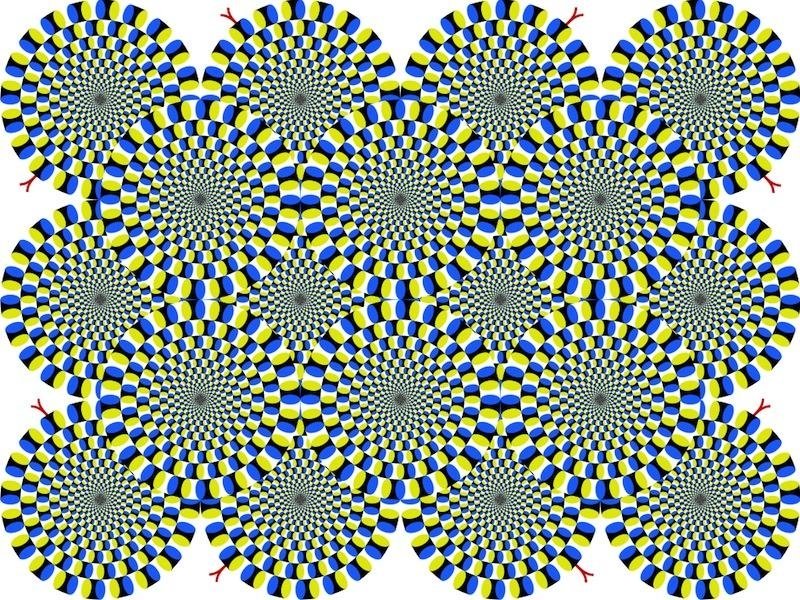Is it true what I see ?
As the main focus of this research evolves around the idea of the “illusion” of the community, it’s important to go through more conventional or more accepted versions of illusion. In this part, I’d like to set the ground to think how illusions are constructed either by visual systems or biological/neurological systems, and impose these strategies on socially constructed illusions. While, illusions share common qualities on how they work as I will argue later, they also have fundamental differences in the way they are stimulated
While an optical illusion is constructed and designed, a physical illusion is a neurologically evoked false sensation. If we establish this distinction, then the illusion of community doesn’t belong to any of these categories. Can we then talk about social illusion ?
And if so, the conditions of this illusion are discussed above, but how is it amplified or weakened by the social media intervention?
“ An optical illusion -or a visual illusion- is an illusion caused by the visual system and characterised by a visual percept that arguably appears to differ from reality. According to the classification proposed by Richard Gregory 49 there are three main classes: physical, physiological, and cognitive illusions, and in each class there are four kinds: Ambiguities, distortions, paradoxes, and fictions. A classic example for a physical distortion would be the one caused by the optical properties of water; an example for a physiological paradox is the motion aftereffect (where, despite movement, position remains unchanged). An example for a physiological fiction is an afterimage. Physiological illusions arise in the eye or the visual pathway, e.g. from the effects of excessive stimulation of a specific receptor type. Cognitive visual illusions are the result of unconscious inferences and are perhaps those most widely known.” 50
As perception is a deep mystery, it is interesting how we convert thousands or millions of tiny signals into the illusion of seeing just one thing. Optical illusions find some unique manner of making your brain play tricks on you, whether you will it to or not. Artists have been experimenting with these manners since the invention of the technique of perception. Traditional Western art is illusionistic by nature. 51 The artistic use of this “trick” uses illusions that our brain’s visual system will accept in order to depict a realistic scene. The effect of optical illusions to wide audiences, is primal. The traditional form and presentation of optical illusions though has not generally been artistic but scientific, designed to demonstrate various aspects of how our visual/perceptual system can be misled. Some common artistic techniques of deception is Trompe l’oeil and Anamorphosis.
Trompe l’oeil ( fool the eye) : works of art designed to deceive the viewer, if only momentarily, into believing that the artist’s fictious representation is real. 52
Anamorphosis : distorting an image, only to have it revealed either from a single vantage point from its reflection in a mirrored surface. 53
